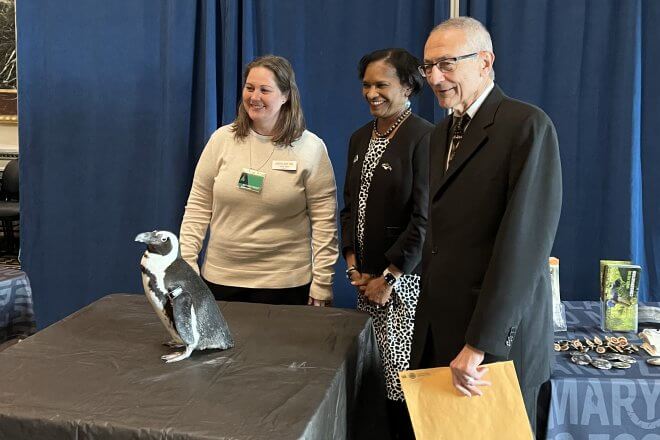BALTIMORE, MD – At the request of the White House, a team of Maryland Zoo keepers and animal ambassadors traveled to Washington, DC to celebrate the 50th anniversary of the Endangered Species Act (ESA) ahead of a special proclamation by President Joe Biden.
“The Endangered Species Act is critical to the mission and work of the Maryland Zoo, a conservation organization dedicated to the protection of wildlife and wild places, both locally and globally,” said Maryland Zoo President and CEO, Kirby Fowler.
“This is a seminal piece of legislation that has only become more important in the fifty years since being enacted. It was an honor to be part of the Biden Administration’s recognition of the occasion,” Fowler said.
“Since the Endangered Species Act was signed into law, AZA-accredited facilities have worked with the federal government and other partners to save animals from extinction. That legacy includes many species, including North American bison, black-footed ferrets, Western pond turtles, whooping cranes, and California condors. Our shared hope is that the list of saved species will continue to grow for the next 50 years and beyond,” said Dan Ashe, President and CEO of the Association of Zoos and Aquariums.
Maryland Zoo has helped create a new sea bird rescue center in Namibia and is funding a research study in Botswana to reduce human/elephant conflict by better understanding wild African elephant movement. Conservation is a priority for Maryland Zoo and every facility accredited by the Association of Zoos and Aquariums (AZA). Maryland Zoo’s conservation work is primarily focused on key species, including: African elephant, African penguin, chimpanzee, native Maryland species, and Panamanian golden frogs. This work includes field conservation in each species’ native habitat, educational outreach, sustainable business practices, and conservation research at home and abroad.
About the Endangered Species Act
The ESA was signed into law on December 28, 1973 and, since then, is credited with preventing 99 percent of all fish, wildlife, and plants under its protection from going extinct. The law expanded the endangered species list, established new animal and habitat protections, and empowered Federal agencies to enforce those protections. Its passage also led to the ratification of the Convention on International Trade in Endangered Species, a global treaty that regulates worldwide trade of animal and plant species.






Share this article